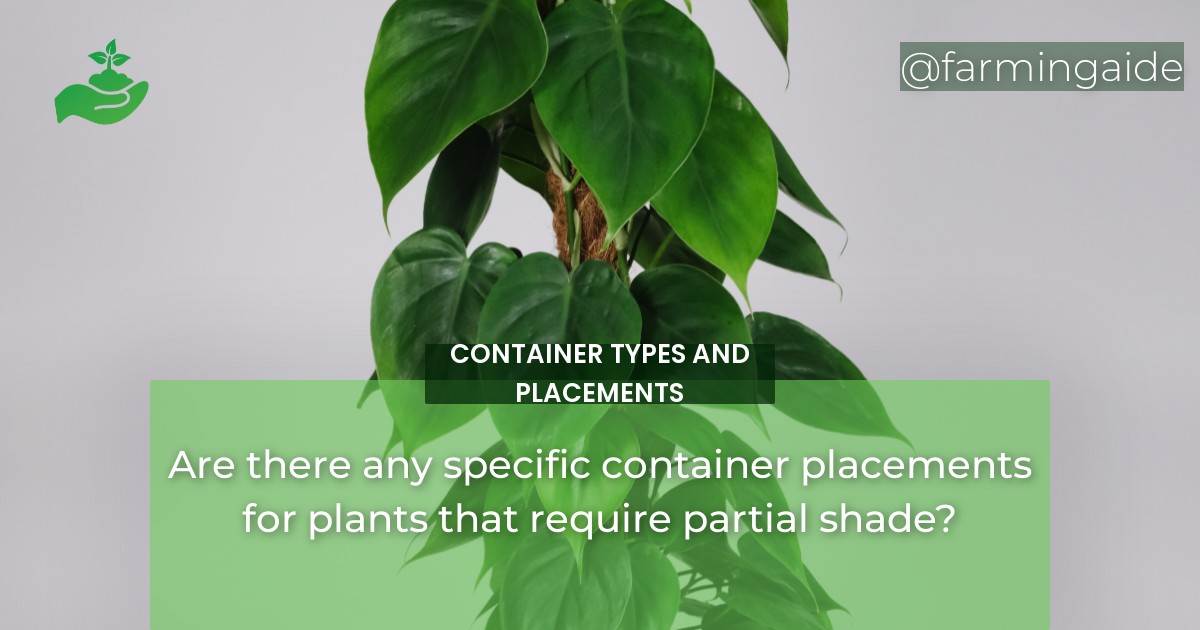Plants that thrive in partial shade can add a lovely touch to any indoor or outdoor space. When it comes to container placements for these plants, there are specific considerations to keep in mind. In this article, we will explore the different container types and placements options for plants that require partial shade.
Understanding Partial Shade Plants
Definition of Partial Shade Plants
Partial shade plants require sunlight for several hours a day, but they also need protection from the intense afternoon sun. These plants do well in areas that receive partial sun exposure, such as under trees or near a building that blocks the sun.
Examples of Partial Shade Plants
Examples of partial shade plants include ferns, hostas, impatiens, and begonias. These plants are known for their vibrant colors and unique textures, making them an excellent addition to any garden or indoor space.
Benefits of Growing Partial Shade Plants
- Partial shade plants are easy to care for and can thrive in various environments.
- These plants can add a pop of color and texture to any space.
- Partial shade plants can help purify the air and improve the overall ambiance of your home or office.
Choosing the Right Container for Partial Shade Plants
Types of Containers Suitable for Partial Shade Plants
When choosing a container for your partial shade plants, it’s essential to consider the size and material of the container. Here are some container types suitable for partial shade plants:
- Terra cotta pots
- Ceramic planters
- Plastic containers
- Wicker baskets
Factors to Consider When Choosing Containers
When choosing a container for your partial shade plants, it’s important to consider the following factors:
- The size of the plant and its root system
- The drainage system of the container
- The material of the container
ALSO READ
Placement Options for Partial Shade Plants
Ideal Placement Locations
When it comes to container placement for partial shade plants, it’s important to keep in mind that these plants require sunlight but need protection from the intense afternoon sun. Here are some ideal placement locations:
- Under a tree
- Near a building that blocks the sun
- In a shaded area of your garden or indoor space
Factors to Consider When Choosing Placement Locations
When choosing a placement location for your partial shade plant, it’s important to consider the following factors:
- The amount of sunlight the plant requires
- The intensity of the afternoon sun exposure
- The proximity to other plants
Container Placement Techniques
When placing your container, it’s essential to ensure that the container is level and secure. Here are some container placement techniques:
- Use a saucer to catch water drainage
- Elevate the container off the ground
- Group containers of similar size and height together
Maintenance Tips for Partial Shade Plants in Containers
Watering Techniques
When it comes to watering your partial shade plants, it’s essential to ensure that the soil is moist but not waterlogged. Here are some watering techniques:
- Water your plant when the soil is dry to the touch
- Ensure that the container has proper drainage
- Avoid overwatering your plant
Fertilizing Techniques
Partial shade plants require regular fertilization to thrive. Here are some fertilizing techniques:
- Use a slow-release fertilizer
- Fertilize your plant during the growing season
- Follow the instructions on the fertilizer package
Pruning Techniques
Pruning your partial shade plant can help it maintain its shape and promote healthy growth. Here are some pruning techniques:
- Remove dead or damaged leaves and stems
- Prune your plant during the growing season
- Avoid pruning more than one-third of your plant at a time
ALSO READ
Common Mistakes to Avoid When Growing Partial Shade Plants in Containers
Poor Placement Choices
Placing your partial shade plant in an area that receives too much sunlight can damage the plant and stunt its growth.
Over or Underwatering
Overwatering or underwatering your plant can lead to root rot or dehydration, respectively.
Lack of Proper Drainage
A container that lacks proper drainage can lead to water buildup and root rot.
Conclusion
Summarize the Main Points
When it comes to container placements for partial shade plants, it’s essential to choose the right container and placement location. Ensure that your plant receives enough sunlight but is also protected from the intense afternoon sun.
Final Thoughts and Recommendations
By following these tips, you can grow healthy and vibrant partial shade plants in containers. Experiment with different container types and placement options to find the perfect fit for your space.
RELATED ARTICLES:


